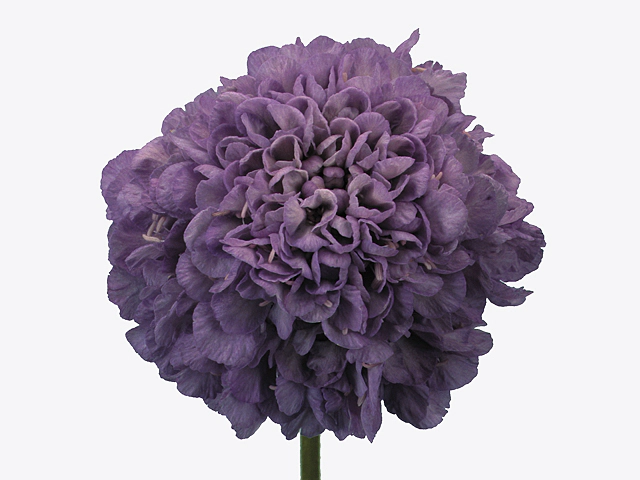Scabiosa stellata

| Leaf arrangement | crosswise opposite |
| Fruit type | Nut(let) |
| Flower color | Purple-medium blue violet-090C |
| Soil fertility | No poor soils |
| Flower diameter | 5,5 - 6 cm |
| Inflorescence | Capitulum (head) |
| soil pH requirement | Alkaline (pH > 7,5); Neutral (pH 6,5 - 7,5) |
| Light conditions | Sunny |
| Moisture requirements | Well-drained |
Scabiosa stellata, commonly known as scabious, is a beautiful flowering plant that belongs to the Caprifoliaceae family. It is characterized by its unique crosswise opposite leaf arrangement and produces small nut-like fruits. The flowers of this plant are known for their stunning colors, ranging from purple to medium blue-violet.
When it comes to soil fertility, scabious prefers to grow in well-drained soils and does not thrive in poor soils. It can tolerate slightly alkaline soil conditions, with a pH level above 7.5. However, it also grows well in neutral soils with a pH ranging between 6.5 and 7.5.
Scabiosa stellata is a sun-loving plant and requires bright light conditions to thrive. It is best grown in sunny areas of the garden where it can enjoy direct sunlight throughout the day. Adequate sunlight is essential for the plant to produce abundant and vibrant flowers.
In terms of moisture requirements, scabious prefers well-drained soils. Excessive moisture or waterlogging can lead to root rot and other diseases. Therefore, it is important to ensure proper drainage when planting scabiosa in the garden. Regular watering is required to keep the soil consistently moist, but not overly saturated.
The flowers of scabiosa are arranged in a unique inflorescence known as a capitulum or head. These flower heads can reach a diameter of 5.5 to 6 centimeters, making them quite showy and attractive to pollinators. The striking colors of the flowers also make scabiosa a popular choice among gardeners looking to add a splash of color to their landscapes.
Overall, scabiosa stellata is a versatile plant that can thrive in various garden conditions. Its resilient nature and stunning flowers make it a fantastic addition to any garden. Whether planted in flower beds, borders, or containers, scabious is sure to bring beauty and charm to any outdoor space.
Market availability index by month:
| Jan. | Feb. | Mar. | Apr. | May | Jun. | Jul. | Aug. | Sep. | Oct. | Nov. | Dec. |
|---|---|---|---|---|---|---|---|---|---|---|---|
| 3 | 2 | 2 | 3 | 3 | 4 | 3 | 3 | 2 | 2 | 2 | 2 |